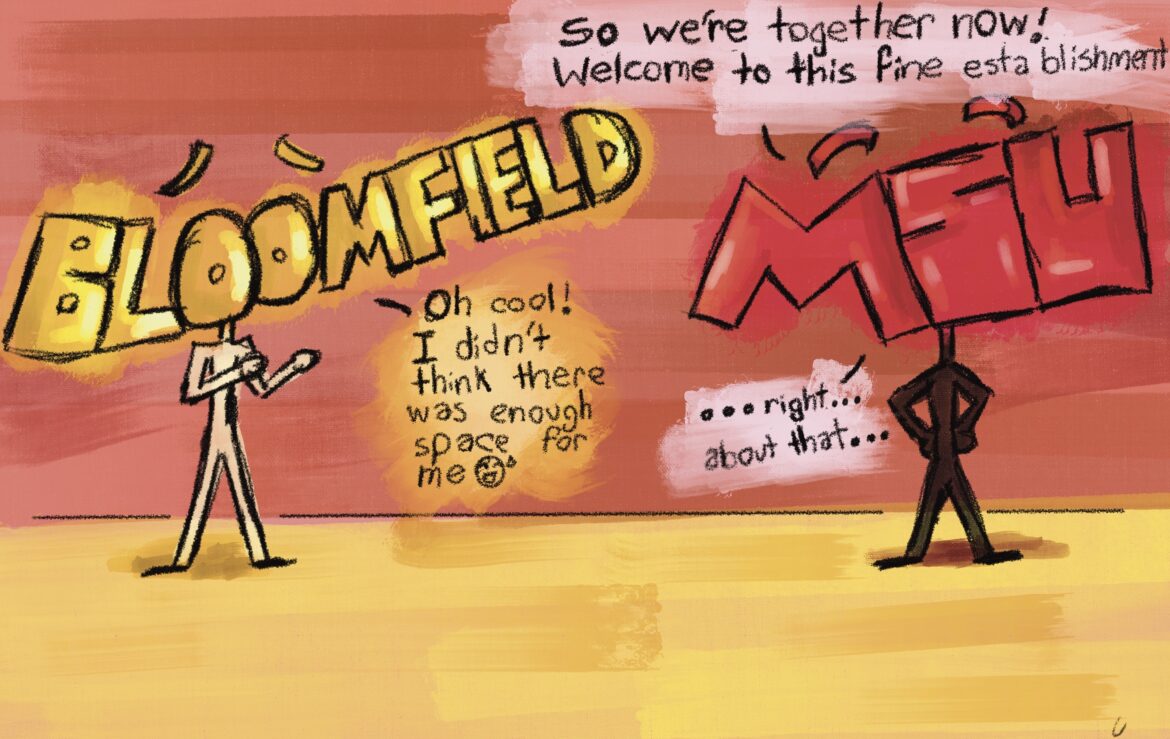Disclaimer: The following article is the opinion of a student writer at Montclair State University. This article does not necessarily reflect the views of The Montclarion or its staff.
What may have been presented as a chance to unify two geographically and socially-connected schools has seemingly become more complicated than anticipated.
The historic merge of Montclair State University and Bloomfield College is leaving students baffled by how disorderly it is proving to be.
With Montclair State’s campus containing a variety of student amenities, that are not equally reflected among its now sister school, Bloomfield College. This issue presents a challenge to students of both schools and directly affects the future of both campuses.
Montclair State University is located roughly 15 minutes from Bloomfield and is commonly accessed by car, public transportation or the most convenient and economical option, the shuttle.
What appeared to be a set in stone schedule has left students, including myself, puzzled following a number of problems within just a few weeks of utilization, including late arrivals and inconvenient hours of operation. Unlike the Montclair State shuttle system, Bloomfield’s schedule only operates from 7 a.m. to 7 p.m. and switches between arriving hourly and every half an hour throughout the day. Students taking later classes are expected to rely on less cost-effective alternatives that are not offered through the school like NJ Transit or ride-share apps.
In comparison to Montclair State University, Bloomfield College contains almost 15,000 less students. The drastic contrast in student populations has resulted in limited dining options, student activities and overall spaces for students.
I am left feeling isolated from my own school having to live apart from the lifestyle I originally expected transferring to Montclair State. Since the mergence of the two schools in 2023, it became a hassle to commute, to eat or participate in any form of student life. Bloomfield College contains only two dining options in comparison to the variety found at Montclair State. Along with participating in Montclair’s extracurriculars, students are welcomed to join Bloomfield’s limited social amenities as well.
Additionally, what are intended to be “shared areas” between the colleges’ students fail to accommodate both groups. Montclair State students have limited access to the same conveniences of those who are enrolled at Bloomfield, such as key card restrictions that limit study space use. Not to mention, a lot of what was advertised to students in the initial email regarding Bloomfield’s housing fails to meet expectations, such as a rooftop courtyard students cannot even utilize. While faculty insures Montclair students the issues at hand will be resolved, there are no foreseeable solutions thus far.
Going forward, there is a lot that could benefit both campuses to allow for a smoother blend of both schools. Most importantly, students require a later shuttle schedule like the already-criticized Night Hawk operations at Montclair State to ensure the school is providing a free option of transportation. Dining services could be extended to include more variety, notably an actual coffee place to compete with the lackluster cold brew machine in the dining hall.
Montclair State could also host club and organization meetings between both campuses as a tool to increase student involvement and increase space for student activity.
Small acts of establishing student inclusivity will work in the favor of both school’s students. As the merger of the schools is still an ongoing process, we expect to see changes in the near future that will foster a cohesive college environment. Going forward, Montclair State holds the responsibility to provide our students with the most satisfying college experience possible through learning from student voices and perspectives regarding their own adaptations to university living.



